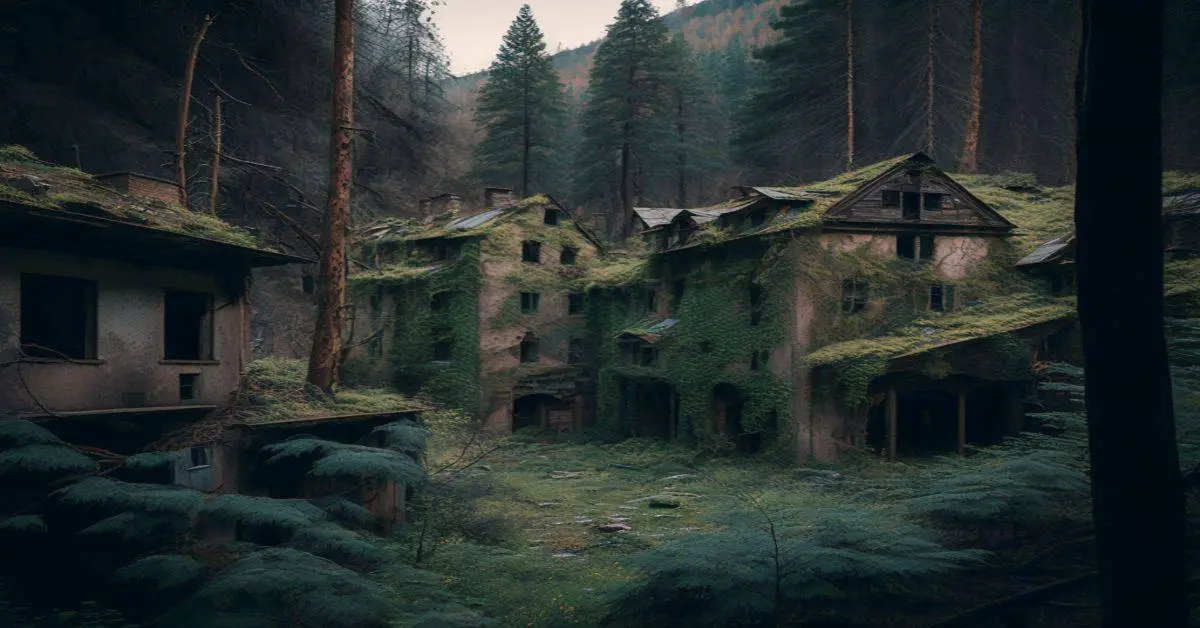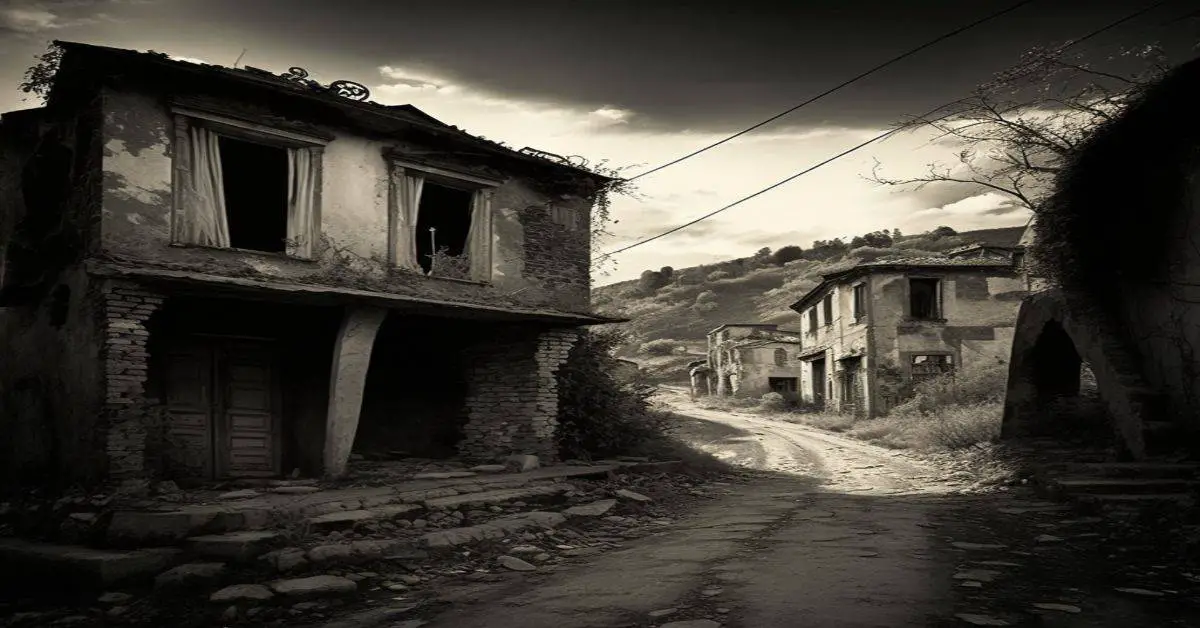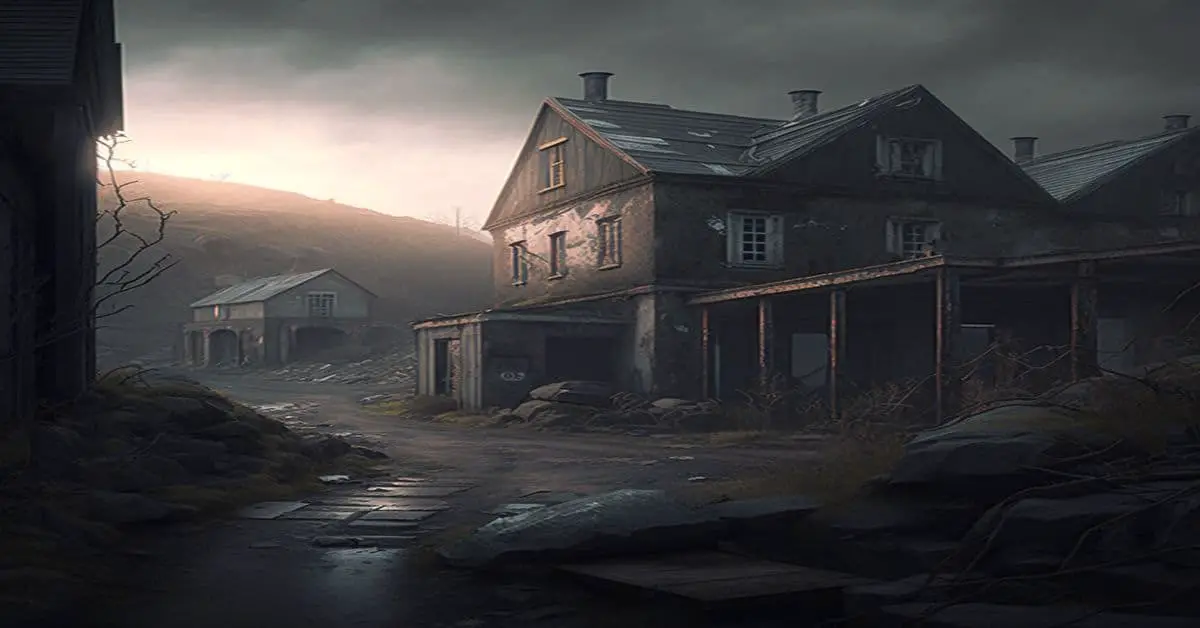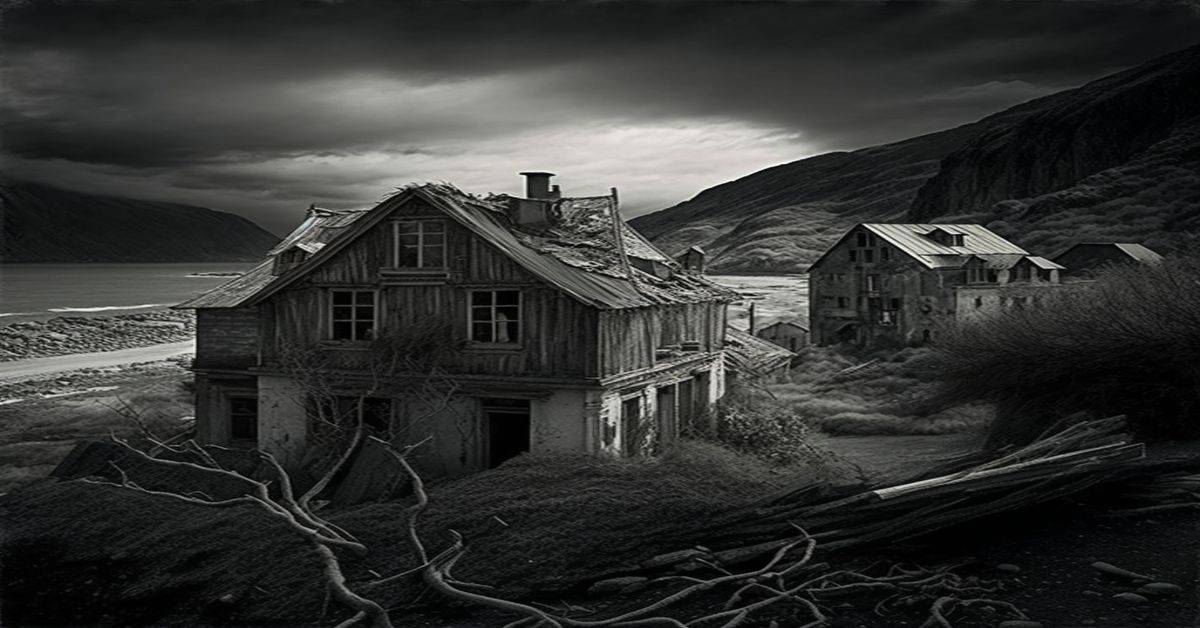The USA is home to an eclectic mix of towns and cities, from New York City’s bustling metropolis to Maine, where you can find old mill buildings dotting riverbanks. These are just some examples, but many others out there range from ghostly forgotten hamlets with tales rooted deep into American histories like Bentonville or Cisco, Colorado, to quaint little mining settlements such as Bodie, California, which was once a big mining town.
In this article, we’ll explore some of history’s most mythological locations: abandoned towns and villages around the world, such as near Chornobyl or Ford’s doomed jungle paradise. These sites have captured our imagination for years with tales that spread like wildfire through newspapers across America.
Pripyat, Ukraine
At 1:23 am on April 26th, 1986, a cataclysmic explosion occurred inside Reactor Number Four at the Soviet nuclear power plant in Chornobyl. The blast immediately sent flames and radioactive material soaring into the sky over Pripyat. It only took 36 hours before 49,000 residents were evacuated, but many experienced health effects, including thyroid cancer which became prevalent among children within this area.
The city of Pripyat has gradually welcomed visitors back since it was abandoned after the nuclear accident. Visits must remain short due to lurking contamination and radiation in the area, but it is a unique experience nonetheless.
The buildings are all deteriorating, with some being reclaimed by nature or animals that now call this place home – but there’s still plenty you can do! Take a hike through one (or several) of these decayed neighborhoods; peer into windows where people once lived their lives before they were suddenly evacuated without warning.
There is a strange post-apocalyptic feel to the town of Pripyat in Ukraine.
Oradour-sur-Glane, France
The worst nightmare of any village in France during World War II came true on June 10th, 1944. The tiny town Oradour-Sur Glane was hosting 642 men and women who had hoped to survive another day under Nazi oppression when Waffen SS troops rounded them up with drastic orders.
The orders were to murder all the village inhabitants and let nothing remain but burning ruins where homes once stood proud against French skies and their acres of lush green fields.
The ruins of Oradour-Sur-Glane continue to be a monument for the people who were killed there and their families. The town was destroyed during World War II when German troops took men away at gunpoint while burning buildings that housed women and children inside. Many died due to explosives or firebombs thrown into areas where villagers hid.
German troops were instructed to leave no survivors and use the small village as an example for others aiding refugees. President Charles de Gaulle created the new building near this site called “Orazia” after he witnessed all these events with his own eyes.
Hashima Island, Japan
Hashima Island was once a bustling community, but with the rise of coal mines elsewhere and later industrialization came an influx in population. To house all these people, Mitsubishi built some world-first buildings that are now considered landmarks – among them were multistory reinforced concrete structures designed for maximum stability even during earthquakes.
Hashima is a fascinating place that has remained an intriguing location for many decades. During World War II, the Japanese forced thousands of Korean and Chinese laborers to work in its mines. By the 1950s, most residents had left due to cramped living conditions, high crime rates, pollution from factories nearby, or waste disposal issues. After 1974, Hashima Island was abandoned and permanently closed for living and work-related activities.
However, Hashima’s ruins of collapsed staircases and condemned apartments began to draw tourists in within the next decade. The high-rises are still filled with old televisions from the mid-20th century and other relics, such as teeming swimming pools that have since sat unused. The eerie setting of the ghost town has made its debut in films such as James Bond’s Skyfall for a quick peak at what is waiting across the ocean.
Forty years ago, this island served its purpose -to produce steel, but now it lies forgotten for most of the year until tourism season starts again.
Varosha, Cyprus
The beautiful seaside town of Varosha has seen better days. The pristine beaches were a gateway into the luxurious lifestyles of well-known names throughout the music and acting industries. The once popular getaway for celebrities like Elizabeth Taylor and Brigitte Bardot is now an abandoned paradise.
When the Turkish army invaded Cyprus and occupied its northern third in response to a Greek nationalist-led coup, 15,000 residents of Varosha were forced out. They left their valuables behind as they escaped into terror with nothing but what they could carry on foot or by boat.
The few who reached safety described this ghost town where once there had been an exquisite resort now reduced to more than half; abandoned homes without power nor running water while heavily guarded barriers prevented travelers from going westward toward Turkey.
When the residents of Maroussi were forced to leave their homes in 1978, they knew it would be years before anything was built back up. In recent years, Greek Cypriots have started talking about reopening this former haven for jet-setters; however, experts estimate that $12 billion needs to be invested in making livable areas out of these old ruins.
Bodie, California
Bodie, California, was established in 1876 after rich deposits of gold and silver were discovered. The miners were inspired to call their new home “Bodik,” the Swedish word for the mountain since they felt the hillsides represented something special. Tourists visiting today will see why after viewing the natural landscape.
The town of Bodie spent most of its days as a boomtown. However, almost every day brought gun battles between citizens, law enforcement officers, factory workers, and miners trying desperately to find ore hidden deep beneath the ground. The town grew and prospered until it had outgrown itself with minimal infrastructure to support such growth.
This led many people in the area, including prospectors seeking their fortune, to move up north where there were more opportunities for wealth or just wanted something different from what they saw day after day (often both). The population dwindled so far that by the WW II era, only a handful could still remember how things used to be.
Fordlandia, Brazil
Fordlandia was founded in Brazil by Henry Ford. The automotive magnate needed it as an outlet for his car tires and hoses, but he also saw this venture could bring small-town American values to South America.
Having already left his mark on cities like Dearborn, Michigan, Mr. Ford wanted something different for this new city. Square dancing sessions were hosted at least once per week, and pools were filled with workers happy to soak up the sun and leisure time provided by their employer.
Unfortunately for Ford, his experiment was doomed almost from the start. The rubber trees of Brazil fell victim to leaf fungus. Employee resentment grew with strict regulations that included a ban on alcohol as well other issues, such as breading chickens without permission.
Assault charges were also filed against them by local workers who were unhappy about their treatment at the hands of Brazilian managers and assistants hired during an attempt by American company executives to figure out how best to operate plantation-style agriculture in the region.
Henry Ford eventually sunk $20 million into his would-be workers’ paradise, but the town failed to produce any latex for automobile tires. Having never visited this city, Ford finally sold it in 1945 after years of fruitless investments.
Brazil bought back their lost territory at pennies at a fantastic price, considering how much time and resources went into building such a large stretch of oasis deep within jungle land.



